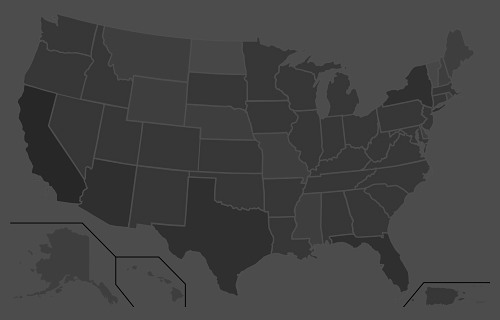“Our added winter moisture and active calling period led to a very long nesting and hatching season, starting in late April and extending into early summer, with chicks hatching as late as early July,” O’Dell said. “From a population standpoint, we are out of a deficit for the first time since 2001-2002. Quail are starting to pop up in places they haven’t been seen in a while.
“If you’ve never had the chance to experience what Arizona quail hunting built its name on, then this would be the year to get out and enjoy it.”
Meanwhile, hunters should note that the season for Mearns’ quail doesn’t begin until Dec. 4. It’s summer rainfall that plays a key role in nesting success and population numbers of this species. After a spotty and relatively weak monsoon across southern Arizona, these birds are likely to be abundant only in pockets that received sufficient precipitation this summer.
A valid Arizona hunting or combination hunt and fish license is required for all hunters 10 and older. Those hunters under 10 must either have a valid hunting or combination hunt and fish license, or be accompanied by an adult who possesses a valid hunting or combination hunt and fish license. Licenses can be purchased online or at license dealers statewide. A youth combination hunt and fish license (ages 10 to 17) is $5.
The general bag limit is 15 quail per day in the aggregate, of which no more than eight may be Mearns’ quail (when the Mearns’ season opens Dec. 4). The general possession limit is 45 quail in the aggregate after opening day, of which no more than 15 Gambel’s, scaled or California quail in the aggregate may be taken in any one day. After the opening of the Mearns’ season, the 45-quail possession limit may include 24 Mearns’ quail, of which no more than eight may be taken in any one day.
More quail-hunting information can be found on the department’s website at https://www.azgfd.com/Hunting/. Another resource for both new and experienced hunters alike is “An Introduction to Hunting Arizona’s Small Game.” Written by Randall D. Babb, the 196-page, full-color book covers where and how to hunt small game birds (like quail), squirrels, rabbits, ducks and geese. It also includes how to prepare and cook your harvest, with illustrations and recipes. The book can be ordered for $16.95 at www.azgfd.gov/publications.
Finally, hunters should check out O’Dell’s techniques for field-dressing quail at https://www.youtube.com/watch?v=3gRwZAcWzzk.
####
Publishers Notes: OUT OF STATE HUNTERS, FISHERMEN & OUTDOOR ENTHUSIASTS; Due to the Covid 19 pandemic, there could be limitations for OUT of STATE hunters, fishermen and other outdoor enthusiasts to include a 14-day quarantine requirement or negative COVID-19 testing alternative. Please check with the State's Department of Natural Resources BEFORE you travel or apply for the 2020 Fall Hunts.
Disclaimer: The views expressed on this site are that of the authors and not necessarily that of TBC Press
The Minnesota Department of Natural Resources has scheduled two special hunts in parts of southeastern Minnesota in December and January aimed at limiting the spread of chronic wasting disease in wild deer.
Residents and nonresidents can participate in the hunts from Saturday, Dec. 26, through Sunday, Dec. 27, and Saturday, Jan. 2, through Sunday, Jan 3, in deer permit area 343, the entire southeast management zone (deer permit areas 643, 645, 646, 647, 648, 649, 655) and the south metro management zone (deer permit area 605).
“Special hunts are an important tool in disease management, allowing us to focus on specific areas where disease has been detected and reduce deer densities in targeted areas,” said Barbara Keller, big game program leader.
Minnesota has Scheduled two Special Hunts to Combat CWD
Submitted by: TBC Press
Posted on: 12/11/20
The Backcountry Press
The country's premier daily HUNTING, FISHING & OUTDOOR news in the USA and around the globe. Read whats happening in your neck of the woods & beyond.
© 2020 TBC Press - All Rights Reserved Website Design by:
News # 14126
All hunters, including archers, who harvest deer in these deer permit areas during the special hunts must submit a sample from any harvested deer to a self-service sampling station for disease testing. In other 2020 deer hunting seasons, hunters in designated areas were strongly encouraged, but not required, to submit samples.
Not only do the special hunts help limit disease spread, they show where disease is more prevalent through hunter-harvested samples tested for CWD, Keller said. This helps the DNR determine where to focus management actions to help keep the deer herd healthy.
The special hunt areas were determined from disease detections from this fall’s hunting season and previous hunting seasons in southeastern Minnesota. Additional information about disease prevalence is needed through disease testing from these special hunts.
These hunts are part of the DNR’s three-pronged CWD management approach. Because the disease is spread through direct contact with an infected deer’s saliva, urine, blood, feces, antler velvet or carcass, reducing deer numbers in localized areas helps lower deer densities – the number of deer per square mile – and remove CWD-positive animals. The DNR also implements deer feeding and attractant bans to reduce the human-facilitated contact between deer, and restricts how hunters are allowed to move deer they harvest.
Hunt information Hunters must plan ahead and check the special hunts webpage for complete details about the special hunts, including hunt rules; registration options; CWD sampling station, quartering sites and dumpster locations; carcass movement restrictions, a map of the hunt area; and information about the DNR’s efforts to keep Minnesota wild deer healthy.
Hunters are required to drop off the head of any harvested deer at a self-service sampling station in their disease management zone. (Alternate sampling options are available for deer hunters who want to keep the antlers of their deer. See the special hunts webpage for details.)
The stations will be unstaffed in order to facilitate social distancing during the COVID-19 pandemic. Hunters should be mindful to follow precautions to help prevent the spread of COVID-19 while hunting and at the stations, including staying home if feeling sick, keeping a 6-foot distance from others and wearing a mask. To ensure safety of fellow hunters, please be patient at stations to accommodate these safety measures. Hunters who have not used these sampling stations before are encouraged to look at DNR resources in advance.
Mandatory carcass movement restrictions remain in effect throughout these special hunts. Whole carcasses cannot leave a management or control zone until a “not detected” CWD test result is received after providing a sample. Successful hunters may de-bone or quarter their deer to transport their harvest without brain and spinal column material.
Other key information for these special hunts:
- Hunters must have a valid hunting license and use the appropriate weapon that matches the license to use any unfilled permits from 2020 deer hunting seasons. A disease management permit can also serve as a standalone license.
- Hunters may purchase an unlimited number of disease management permits. During special hunts, these permits are valid on deer of either sex.
- Archery hunters participating in the archery season that continues during the special hunts must submit samples for any deer harvested in the permit areas open for the special hunts.
- Private land makes up most of the area within the hunt area and hunters must have landowner permission to hunt that land.
- Some state parks, state scientific and natural areas, and federal lands will be open to hunting, with some exceptions or permit requirements. Please visit the special hunts webpage for information.
CWD test results, including locations of confirmed positive test results and statistics, are available on the DNR website at mndnr.gov/cwdcheck.
For more information on chronic wasting disease, including maps of CWD surveillance areas, frequently asked questions and hunter information, visit mndnr.gov/cwd.
####
Publishers Notes: Our country is still battling COVID-19. To avoid the spread of this virus and continue to enjoy outdoor activities, ALL outdoor enthusiasts (man, woman, child) should follow the guidelines set by nps.gov. These guidelines include; social distancing, the Leave No Trace principles, including pack-in and pack-out, to keep outdoor spaces safe and healthy.












